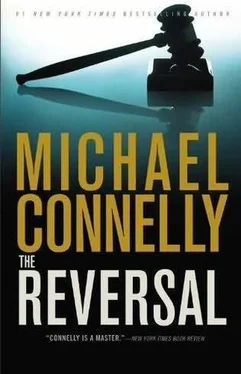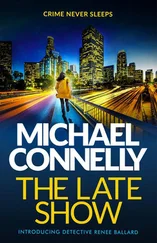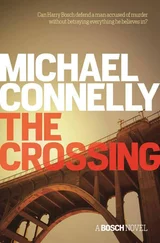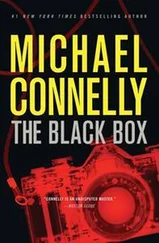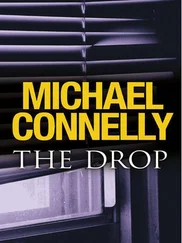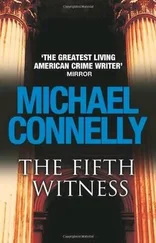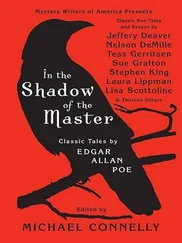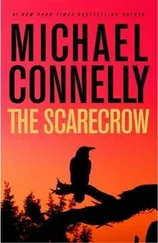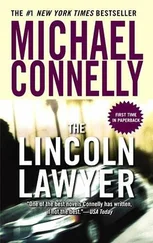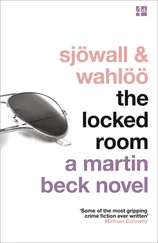“It means sometimes things happen when the victim is a child. And that I wasn’t there when they found it.”
“Boy, maybe you should be working for the defense.”
Bosch dropped his hand to his side.
“I’m sure they’ve thought of all of this already.”
He turned back toward the elevators and headed down the hallway.
Tuesday, April 6, 9:00 A.M .
Sometimes the wheels of justice roll smoothly. The second day of trial started exactly as scheduled. The full jury was in the box, the judge was on the bench and Jason Jessup and his attorney were seated at the defense table. I stood and called my first witness of what I hoped would be a productive day for the prosecution. Harry Bosch even had Izzy Gordon in the courtroom ready to go. By five minutes after the hour, she was sworn in and seated. She was a small woman with black-framed glasses that magnified her eyes. My records said she was fifty years old but she looked older.
“Ms. Gordon, can you tell the jury what you do for a living?”
“Yes. I am a forensic technician and crime scene supervisor for the Los Angeles Police Department. I have been so employed in the forensics unit since nineteen eighty-six.”
“Were you so employed on February sixteenth of that year?”
“Yes, I was. It was my first day of work.”
“And what was your assignment on that day?”
“My job was to learn. I was assigned to a crime scene supervisor and I was to get on-the-job training.”
Izzy Gordon was a major find for the prosecution. Two technicians and a supervisor had worked the three separate crime scenes relating to the Melissa Landy case-the home on Windsor, the trash bin behind the El Rey and the tow truck driven by Jessup. Gordon had been assigned to be at the supervisor’s side and therefore had been in attendance at all three crime scenes. The supervisor was long since dead and the other techs were retired and unable to offer testimony about all three locations. Finding Gordon allowed me to streamline the introduction of crime scene evidence.
“Who was that supervisor?”
“That was Art Donovan.”
“And you got a call out with him that day?”
“Yes, we did. An abduction that turned into a homicide. We ended up going from scene to scene to scene that day. Three related locations.”
“Okay, let’s take those scenes one at a time.”
Over the next ninety minutes I walked Gordon through her Sunday tour of crime scenes on February 16, 1986. Using her as the conduit, I could deliver crime scene photographs, videos and evidence reports. Royce continued his tack of objecting at will in an effort to prevent the unimpeded flow of information to the jury. But he was scoreless and getting under the judge’s skin. I could tell, and so I did not complain. I wanted that annoyance to fester. It might come in handy later.
Gordon’s testimony was fairly pedestrian as she first discussed the unsuccessful efforts to find shoe prints and other trace evidence on the front lawn of the Landy’s house. It turned more dramatic when she recalled being urgently called to a new crime scene-the trash bin behind the El Rey.
“We were called when they found the body. It was handled in whispers because the family was there in the house and we did not want to upset them until it was confirmed that there was a body and that it was the little girl.”
“You and Donovan went to the El Rey Theatre?”
“Yes, along with Detective Kloster. We met the assistant medical examiner there. We now had a homicide, so more technicians were called in, too.”
The El Rey portion of Gordon’s testimony was largely an opportunity for me to show more video footage and photographs of the victim on the overhead screens. If nothing else, I wanted every juror in the box to be incensed by what they saw. I wanted to light the fire of one of the basic instincts. Vengeance.
I counted on Royce to object and he did, but by then he had exhausted his welcome with the judge, and his argument that the images were graphic and cumulatively excessive fell on deaf ears. They were allowed.
Finally, Izzy Gordon brought us to the last crime scene-the tow truck-and she described how she had spotted three long hairs caught in the crack that split the bench seat and pointed them out to Donovan for collection.
“What happened to those hairs?” I asked.
“They were individually bagged and tagged and then taken to the Scientific Investigation Division for comparison and analysis.”
Gordon’s testimony was smooth and efficient. When I turned her over to the defense, Royce did the best he could. He did not bother to assail the collection of evidence but merely attempted once again to gain a foothold for the defense theory. In doing so he skipped the first two crime scenes and zeroed in on the tow truck.
“Ms. Gordon, when you got to the Aardvark towing yard, were there police officers already there?”
“Yes, of course.”
“How many?”
“I didn’t count but there were several.”
“What about detectives?”
“Yes, there were detectives conducting a search of the whole business under the authority of a search warrant.”
“And were these detectives you had seen earlier at the previous crime scenes?”
“I think so, yes. I would assume so but I do not remember specifically.”
“But you seem to remember other things specifically. Why don’t you remember which detectives you were working with?”
“There were several people working this case. Detective Kloster was the lead investigator but he was dealing with three different locations as well as the girl who was the witness. I don’t remember if he was at the tow yard when I first arrived but he was there at some point. I think that if you refer to the crime scene attendance logs, you will be able to determine who was at what scene and when.”
“Ah, then we shall do just that.”
Royce approached the witness stand and gave Gordon three documents and a pencil. He then returned to the lectern.
“What are those three documents, Ms. Gordon?”
“These are crime scene attendance logs.”
“And which scenes are they from?”
“The three I worked in regard to the Landy case.”
“Can you please take a moment to study those logs and use the pencil I have given you to circle any name that appears on all three lists.”
It took Gordon less than a minute to complete the task.
“Finished?” Royce asked.
“Yes, there are four names.”
“Can you tell us?”
“Yes, myself and my supervisor, Art Donovan, and then Detective Kloster and his partner, Chad Steiner.”
“You were the only four who were at all three crime scenes that day, correct?”
“That is correct.”
Maggie leaned into me and whispered.
“Cross-scene contamination.”
I shook my head slightly and whispered back.
“That suggests accidental contamination. I think he’s going for intentional planting of evidence.”
Maggie nodded and leaned away. Royce asked his next question.
“Being one of only four who were at all four scenes, you had a keen understanding of this crime and what it meant, isn’t that correct?”
“I’m not sure what you mean.”
“Among police personnel, were emotions high at these crime scenes?”
“Well, everyone was very professional.”
“You mean nobody cared that this was a twelve-year-old girl?”
“No, we cared and you could say things were at least tense at the first two scenes. We had the family at one and the dead little girl at the other. I don’t really remember things being emotional at the tow yard.”
Wrong answer, I thought. She had opened a door for the defense.
Читать дальше
